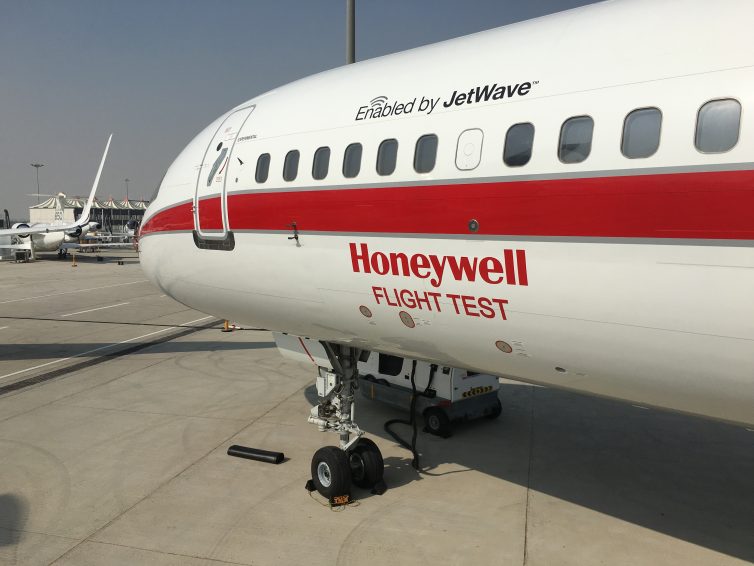
The star of the MEBAA static display, Honeywell’s flying testbed Boeing 757 N757HW – Photo: Jacob Pfleger | AirlineReporter
As part of this years Middle East Business Aviation Association (MEBAA) show at Dubai-Al Maktoum Airport (DWC), there were over 45 aircraft on static display. Of course, there were countless VIP Boeing and Airbus jets there, however for me the highlight was the Honeywell Boeing 757-200 flying testbed. The aircraft has a rather interesting history; it started out life with Eastern Airlines in 1983 before operating for a British leisure airline from 1995-2002, before finally coming to Honeywell in 2005 after a few years in storage. As of 2008, the aircraft has completed over 400 test flights and some 1,700 flight hours in over 15 countries. That’s impressive.
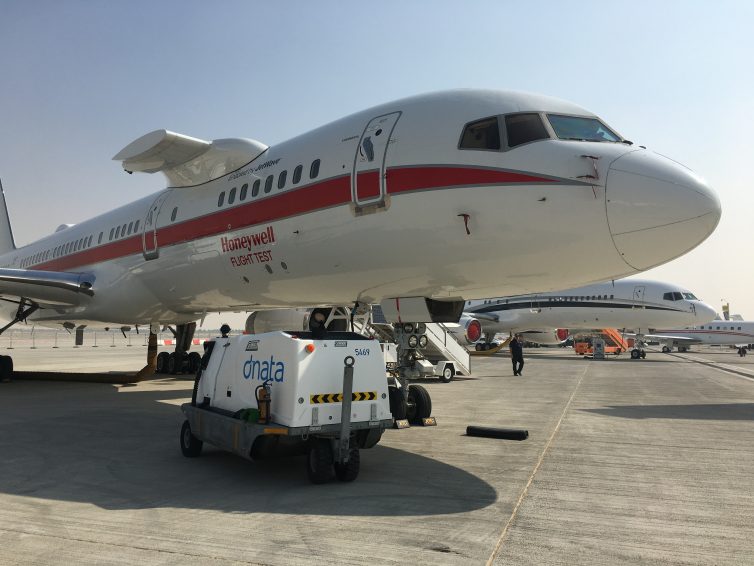
This is no ordinary 757 – Photo: Jacob Pfleger | AirlineReporter
The most distinguishing feature of the aircraft is the engine mount on the forward right-hand section of the fuselage. The mount is primarily used for in-flight testing of new engines — mainly for the corporate jet market. The most notable engines that were tested and certified on the aircraft include the HTF7000 and TFE731 engines, which power the Learjet aircraft series.
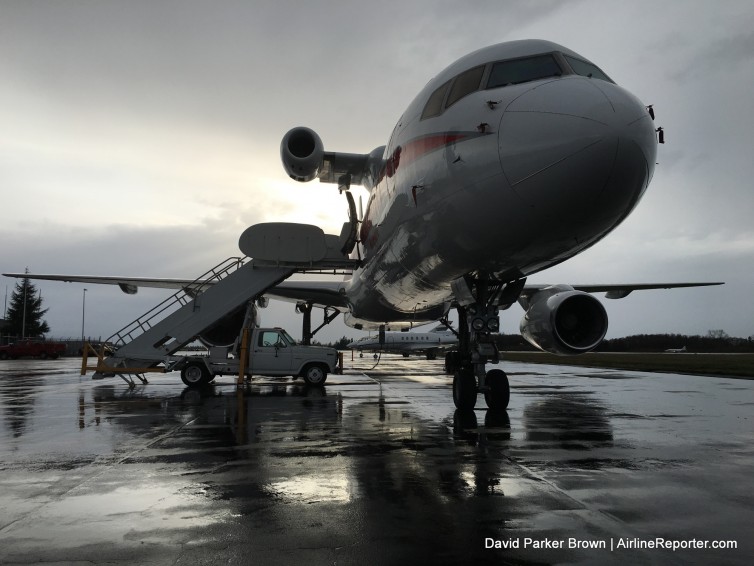
Honeywell’s Boeing 757 sits at Paine Field
Honeywell recently reached out and let me know that their Boeing 757 would be parked at Paine Field (north of Seattle) overnight. They asked if I’d like to take a tour before it departed back to Phoenix. Um… yes please!
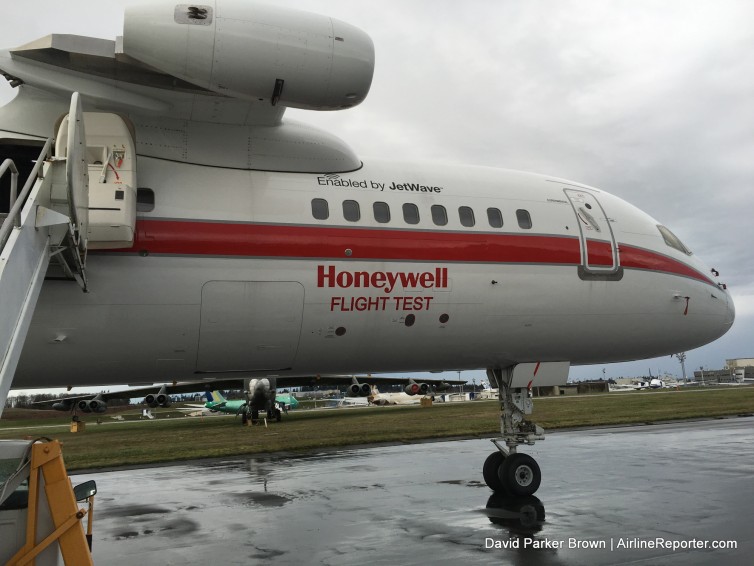
The third engine on the side of the 757, with a B-52 in the background
The rain partly cleared as I arrived and the first obvious difference between Honeywell’s 757 and the run-of-the-mill 757 is the third engine on the side of the fuselage. The engine mount is used to test different Honeywell engines in the “real world.” During my tour, the Honeywell TFE731 engine was hooked up and it was being tested for vibration issues.
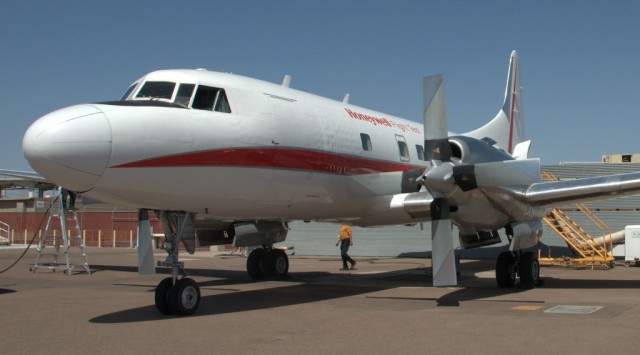
N580HW, Honeywell Aero’s CV-580 – Photo: JL Johnson | AirlineReporter
Late last month I had the opportunity to attend Honeywell Aero’s International Media Event in Phoenix, AZ. The symposium focused on all things Honeywell and AvGeek, with a small and diverse audience of mainstream media and bloggers from all across the world.
Prior to the event, I understood that Honeywell was, like many other conglomerates, well-established in the aviation industry. Indeed, we’ve written extensively about how Honeywell improves aviation safety, we have geeked out over their incredibly diverse fleet of test aircraft and, of course, have covered their innovative and (can we say exciting? Because it is!) Electric Green Taxi System, EGTS.
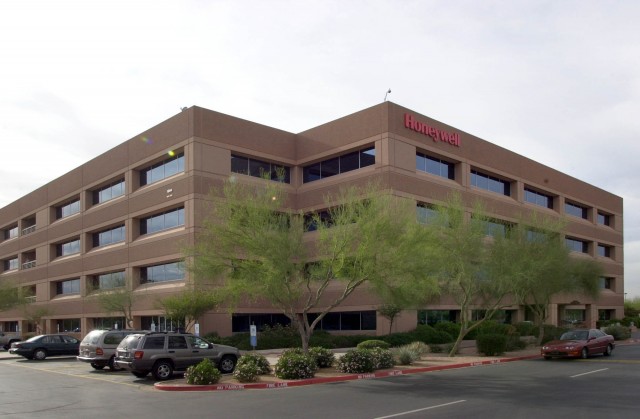
Honeywell Aerospace’s Sky Harbor Facility in Phoenix – Photo: Honeywell
But even with this coverage, we’d only begun to scratch the surface of Honeywell’s Aerospace operations. In just shy of two days, with their incredibly passionate crew, I learned more about the company and their products than I had over a lifetime of being an aviation enthusiast.
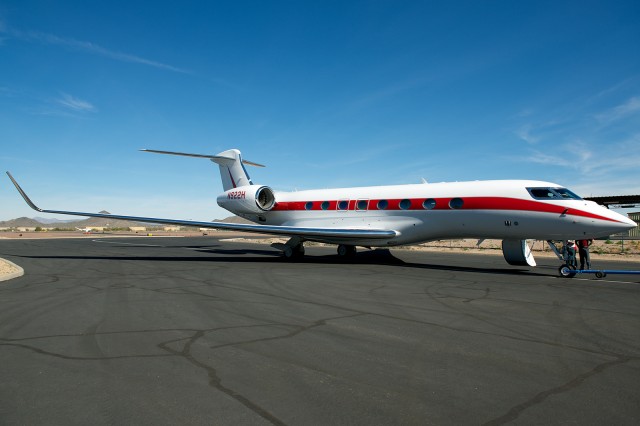
Honeywell Aerospace has a beautiful property – Photo: Bernie Leighton | AirlineReporter
After experiencing what it was like to fly on the Gulfstream G650, it was time to explore the engineering advancements Honeywell was developing at their Deer Valley lab.
What I was shown would put aviators that finished their careers even fifteen years ago in absolute awe.
Honeywell has a four-step approach to designing cockpit avionics:
- Give the pilot what they need
- Give the pilot only what they need
- Give the pilot the information only when they need it
- Give them the information in a way that is intuitive, unambiguous, and easy to understand
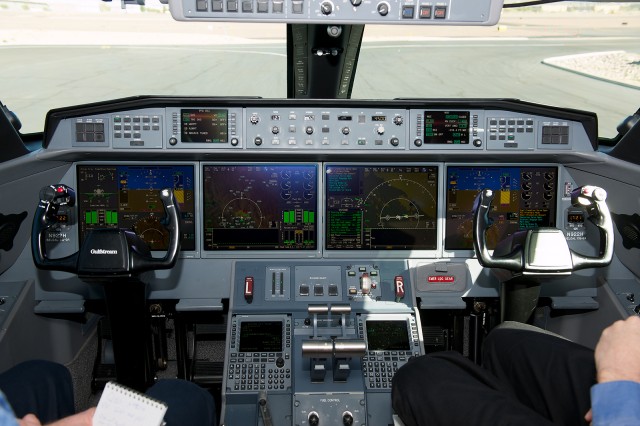
Primus Epic, called PlaneView on Gulfstreams is the current state-of-the-art-flight-deck – Photo: Bernie Leighton | AirlineReporter
The Primus Epic system on the G650 was designed with those four principles in mind. The positive response from flight crews has been overwhelming. Clearly the real-world use is matching up with the testing. This positive response has allowed Honeywell to go even further in their exploration of pilot-aircraft interface.
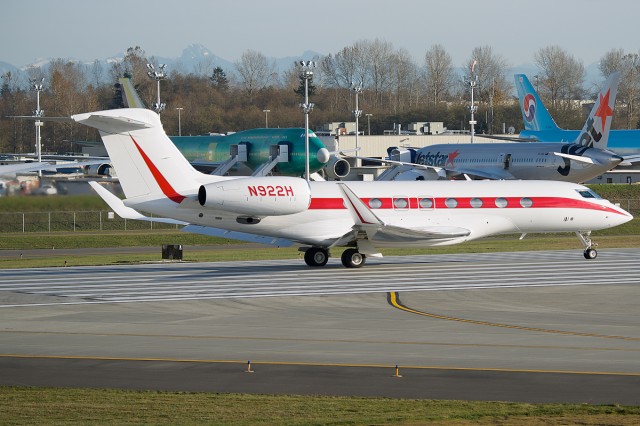
Honeywell’s mint-condition Gulfstream G650 departing KPAE – Photo: Bernie Leighton | AirlineReporter
Last year, I wrote about visiting Honeywell’s facility in Redmond, after which I got to spend an afternoon flying with their crash test dummies. That, however, only covers the activities of Honeywell Aerospace in Washington State.
Honeywell has a large presence in Phoenix, specifically at Deer Valley Airport. At one point this was the legacy of Sperry Electronics, which got its start making gyroscopes for Curtiss biplanes. They even had a rudimentary autopilot demonstration in June, 1914.
So, what does this have to do with Honeywell? Well, prior to their purchase by Honeywell Aerospace, Sperry developed the first Flight Management Computers (FMC). The best way to describe an FMC is that it’s a layer above the autopilot and allows for a degree of pre-planning and programming for the aircraft’s mission. Flight Management Computers have evolved to a level most of the old Sperry guard could never have imagined, though the form factor has remained relatively the same.
Honeywell Aerospace is not known for sitting still. Much of their avionics technology hangs out on the bleeding edge. The thing is, airlines and their associated airframers tend to demand low cost AND reliability. Flight deck and avionics design usually evolves within corporate aviation. It is no wonder, then, that Honeywell and Gulfstream work so closely to develop an integrated flight deck and avionics suite. The internal name of the Honeywell avionics and flight management package is Primus Epic.
While it is also at home on a Falcon 7X, Dassault puts their own special finishing touches on it so that it better matches their ecosystem. We’re not talking about Dassault today- we’re discussing Gulfstream- so the Honeywell system is marketed as PlaneView.
How does one get a good understanding of the practical elements of PlaneView/Primus Epic you ask?
The best way. By seeing it in person by flying on a Gulfstream G650 and who am I to say no?








